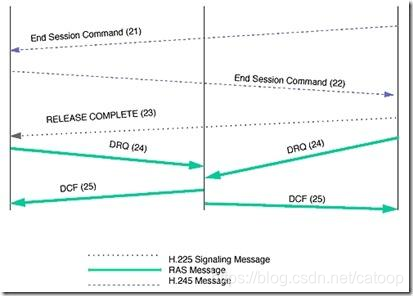现在AOP的场景越来越多,所以我们有必要理解下和AOP相关的一些概念和机制。基础知识和原理类大家搜索spring aop/aspectj,有大量现成的可以参考,基本上只要理解了jdk动态代理、cglib字节码动态生成代理就足够了,而且必须知道这个代理类是spring托管的(如果是自己创建的代理类,是无法被拦截的,此时只能使用过滤器/拦截器机制,他们本身是链式的,跟代理无关)。
import org.aspectj.lang.reflect.SourceLocation;
public interface JoinPoint {
String toString(); //连接点所在位置的相关信息
String toShortString(); //连接点所在位置的简短相关信息
String toLongString(); //连接点所在位置的全部相关信息
Object getThis(); //返回AOP代理对象,也就是com.sun.proxy.$Proxy18
Object getTarget(); //返回目标对象,一般我们都需要它或者(也就是定义方法的接口或类,为什么会是接口呢?这主要是在目标对象本身是动态代理的情况下,例如Mapper。所以返回的是定义方法的对象如aoptest.daoimpl.GoodDaoImpl或com.b.base.BaseMapper<T, E, PK>)
Object[] getArgs(); //返回被通知方法参数列表
Signature getSignature(); //返回当前连接点签名 其getName()方法返回方法的FQN,如void aoptest.dao.GoodDao.delete()或com.b.base.BaseMapper.insert(T)(需要注意的是,很多时候我们定义了子类继承父类的时候,我们希望拿到基于子类的FQN,这直接可拿不到,要依赖于AopUtils.getTargetClass(point.getTarget())获取原始代理对象,下面会详细讲解)
SourceLocation getSourceLocation();//返回连接点方法所在类文件中的位置
String getKind(); //连接点类型
StaticPart getStaticPart(); //返回连接点静态部分
}
public interface ProceedingJoinPoint extends JoinPoint {
public Object proceed() throws Throwable;
public Object proceed(Object[] args) throws Throwable;
}
JoinPoint.StaticPart:提供访问连接点的静态部分,如被通知方法签名、连接点类型等:
public interface StaticPart {
Signature getSignature(); //返回当前连接点签名
String getKind(); //连接点类型
int getId(); //唯一标识
String toString(); //连接点所在位置的相关信息
String toShortString(); //连接点所在位置的简短相关信息
String toLongString(); //连接点所在位置的全部相关信息
}
环绕通知 ProceedingJoinPoint 执行proceed方法的作用是让目标方法执行,这也是环绕通知和前置、后置通知方法的一个最大区别。
Proceedingjoinpoint 继承了 JoinPoint 。是在JoinPoint的基础上暴露出 proceed 这个方法。proceed很重要,这个是aop代理链执行的方法。

暴露出这个方法,就能支持 aop:around 这种切面(而其他的几种切面只需要用到JoinPoint,这跟切面类型有关), 能决定是否走代理链还是走自己拦截的其他逻辑。建议看一下 JdkDynamicAopProxy的invoke方法,了解一下代理链的执行原理。
典型的用法如下:
public Object around(ProceedingJoinPoint point) throws Throwable {
Signature signature = point.getSignature(); // AopUtils.getTargetClass(point.getTarget())获取原始对象,例如对于Mapper而言,它获取的是具体代理的Mapper如com.b.mapper.DefaultDsMapper(如果前者继承了后者的话)而不是定义该方法的Mapper如com.b.base.BaseMapper<Info, InfoExample, InfoKey>,如下图
Type[] types = AopUtils.getTargetClass(point.getTarget()).getGenericInterfaces(); // getGenericInterfaces方法能够获取类/接口实现的所有接口
Annotation nologgingAnno = ((Class)types[0]).getAnnotation(Nologging.class); // type是所有类型的父接口
MethodSignature methodSignature = (MethodSignature)signature;
Method targetMethod = methodSignature.getMethod();

现在来补充下Java中Type接口与Class类的区别联系。
package java.lang.reflect;
/**
* Type is the common superinterface for all types in the Java
* programming language. These include raw types, parameterized types,
* array types, type variables and primitive types.
*
* @since 1.5
*/
public interface Type {
/**
* Returns a string describing this type, including information
* about any type parameters.
*
* @implSpec The default implementation calls {@code toString}.
*
* @return a string describing this type
* @since 1.8
*/
default String getTypeName() {
return toString();
}
}
其主要的子类包括:

总结来说:
Type是一个接口。
Type是Java中所有类型的父接口,有一些子类,如上所示。
Type包括:raw type(原始类型,对应Class),parameterized types(参数化类型), array types(数组类型), type variables(类型变量) and primitive types(基本类型,对应Class).
Type是JDK1.5引入的,主要是为了泛型。
Type接口与Class类的区别联系
Type是Class的父接口。
Class是Type的子类。
提示:因为AOP是基于动态代理生成,如果想要仔细研究生成的代理类长什么样,可以设置系统参数-Dsun.misc.ProxyGenerator.saveGeneratedFiles=true,这样就会保存所有自动生成的代理类(注:生产环境严禁使用)。
参考:
https://blog.csdn.net/cxh5060/article/details/45151863(拦截自定义注解,需要注意的是,标准的AOP表达式@annotation(com.xxx.yyy.annotation.CustomAnnotation)只能拦截实现类方法上的注解,无法拦截接口上的注解,如有需根据接口方法上的注解拦截的需求,需使用spring bean生命周期的BeanPostProcessor动态生成代理,而不是采用简单的AOP实现)
https://www.cnblogs.com/akaneblog/p/6720513.html(jdk动态代理手工编写,一般框架使用,比如spring aop、mybatis中logger也使用了动态代理)
https://www.cnblogs.com/haiq/p/4304615.html、https://blog.csdn.net/xlgen157387/article/details/82497594(cglib vs jdk动态代理性能参考)
https://blog.csdn.net/u010061691/article/details/50857798(进一步加了解释,实际上InvocationHandler是要被明确调用的,只不过在AOP中通常被框架调用了,如果是应用自己编写的话,则需要代码中通过InvocationHandler.getProxy,然后强转、再调用。https://dzone.com/articles/java-dynamic-proxies)
https://dzone.com/articles/cglib-missing-manual(cglib手册)
(END)





















 3万+
3万+











 被折叠的 条评论
为什么被折叠?
被折叠的 条评论
为什么被折叠?








